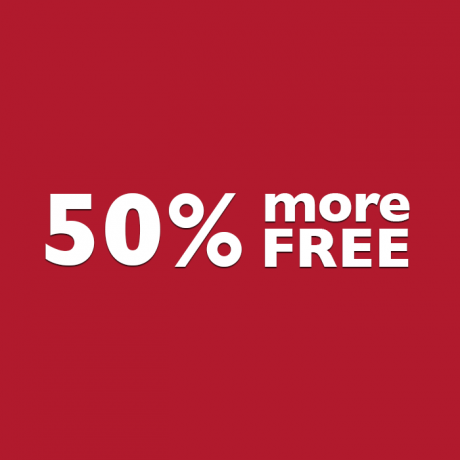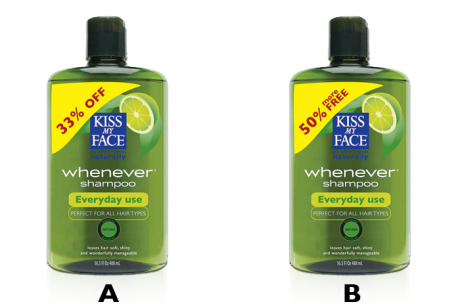Persuasion
Psychological Tricks That Persuade Your Brain to Buy
Best-selling author, Roger Dooley, explains top persuasive selling techniques.
Posted October 21, 2013

If you’ve had your ear to the ground you’ll have no doubt heard of Roger Dooley and his now infamous, best-selling book:
Brainfluence: 100 Ways to Persuade and Convince Consumers with Neuromarketing
One of the founding fathers of neuromarketing, Roger helps businesses apply neusroscientific research and methods to their marketing endeavours, and with a background in engineering, psychology and the behavioural sciences, he has a rather fabulous set of strings to his bow.
I had the pleasure of finally meeting Roger when we shared a stage at the fantastic Conversion Summit in Frankfurt, and I recently interviewed him on my podcast. He's very knowledgeable when it comes to principles of persuasion, and so I thought I'd ask him to reveal some insider tips on psychological pricing strategies to help you increase your sales.
Persuasive pricing strategies
“We think of ourselves as being rational, a sort of human calculator”
Although we like to think that we’re rational, especially when it comes to purchase decisions (comparing all available info and opting for the best objective solution), the truth of the matter is that we’re not very good as human calculators.
In fact, Roger explains that our brains interpret numbers differently, irrationally, and subjectively. For example, take a look at the options below—which looks more appealing to you?

Image credit: Kissmyface.com
If your instinctive response was to go for option (b) 50% more, you’d be in good company. Research shows that although the total discount in each case is numerically the same, we exhibit a marked preference for the option that makes us feel as though we’re getting more for our money.
In fact Roger reveals that this difference is so significant, that when people were actually presented with option (b), the strategy resulted in a whopping 71% increase in sales.
TIP: Look at the strategies you employ when selling items in a sale—could you re-frame any of these in the terms outlined above?
Same thing, different price
Another bizarre way to boost your sales is to change the price of two comparable items. Sounds a bit weird, but if (for instance) you have two similar shampoos that you’re selling at the same price, you may sell more by making one shampoo more expensive than the other.
Why does this work?
Well, even the difference of a few pence or cents can help your brain to differentiate more easily between two similar options, making it easier for you to solve the paradox of choice.
Although it’s unclear exactly why such strategies work, Roger points out that
“From the standpoint of selling things on the web, the why is a lot less important than the what”
That said, he also reminds us that
“Sometimes it’s helpful to know, because it may give you other insights into the way your customers behave”
For example if the small price difference works because it creates a tiny amount of product differentiation, thus making it easier for you to choose (rather than being stuck between two identical options), then knowing why this works may also help you to experiment with other small differentiators that could have the same effect.
TIP: If you’re selling two similar products or services, try (and test) this technique and see if changing the price by a small amount boosts your conversions.
When loyalty programs back-fire
We all know that loyalty programs can be a great way to reward our customers, boost our sales and promote the longevity of our businesses.
But the psychological techniques that make it so effective, can also have disastrous effects if the strategy is not deployed correctly. Roger highlights one particular tail of woe: Starbuck’s Gold loyalty card.
“True loyalty comes from the customer experience… What rewards programs do is induce loyalty, and hopefully if that experience is really great, that true loyalty will develop over time”
So what’s the story?
Well, Starbucks recently launch a Gold-card loyalty program for their most committed coffee drinkers. The idea was to reward customers with a star for each purchase they made, and if you earned 30 stars within a given year you’d be upgraded to ‘Gold Status.’
Playing on the psychology of status and prestige, if you made the cut you’d get a special gold card with your name on it, and staff would greet you by name when you entered the store. Nice.
BUT there was a catch.
Once you’d achieved your hard-won Gold Status, if you then went a year without buying an additional 30 items, you'd actually get demoted. Basically you’d be punished for not buying enough coffee!
OK so it would be business suicide to give customers a lifetime benefit for a one-off behaviour, but in the case of Starbucks the outcry and ensuing media kerfuffle could have been averted had they simply given their Gold customers a helpful hint that they were close to losing their status. This would have showed transparency on their part, and would have encouraged Gold customers to retain their status by simply buying a few more drinks.
TIP: The moral of the story is this: don’t piss people off by buying their loyalty and then taking it away again. It will bite you in the botty.
So… Enjoy this post? This is just a brief snapshot of what Roger Dooley and I talked about. Listen to the whole recording here.
Come back next week when I’ll be writing about our next special guest, and sharing their expert advice with you on how to use the secret psychology of persuasion to increase your online influence.




